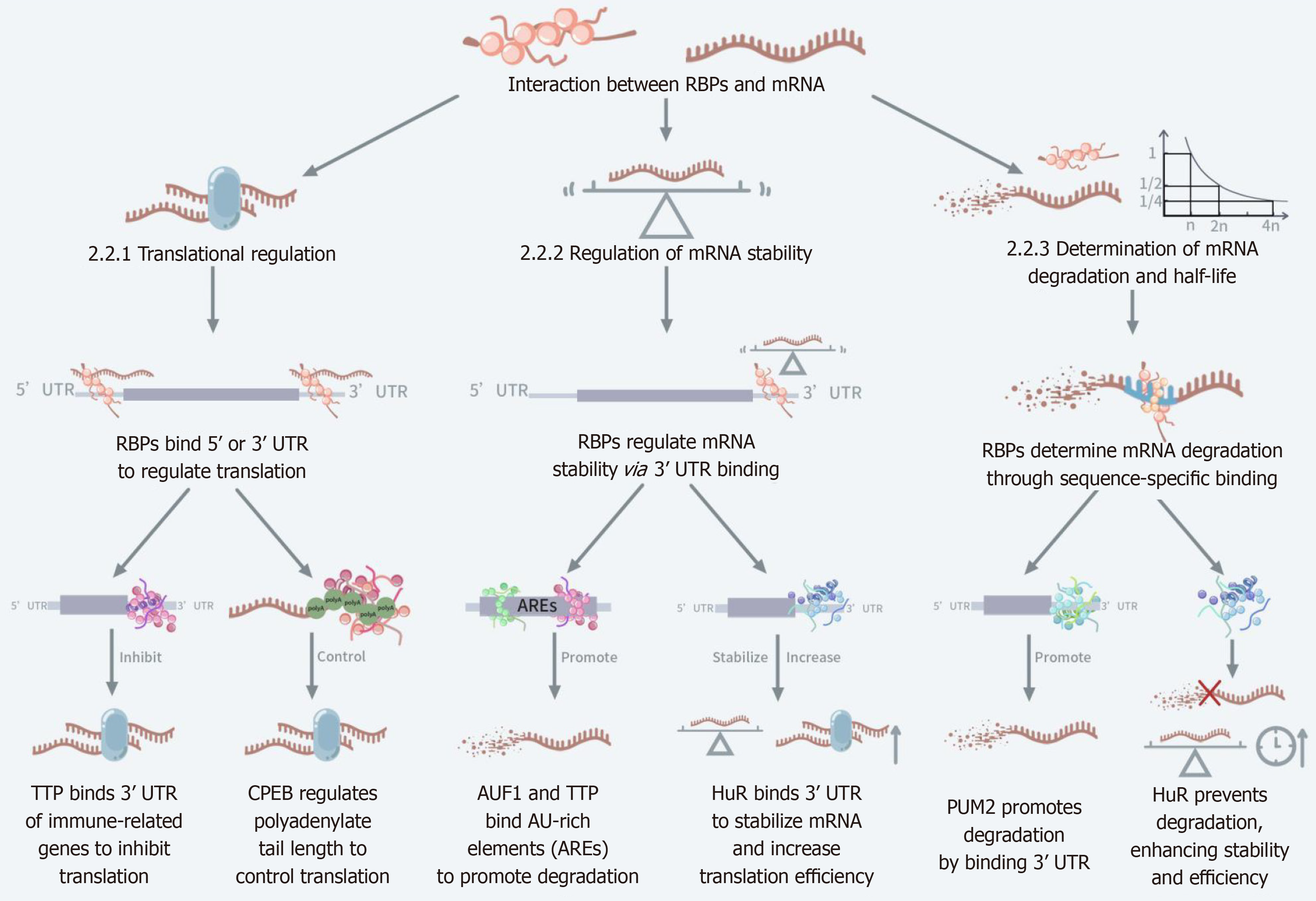Copyright
©The Author(s) 2025.
World J Psychiatry. Sep 19, 2025; 15(9): 107498
Published online Sep 19, 2025. doi: 10.5498/wjp.v15.i9.107498
Published online Sep 19, 2025. doi: 10.5498/wjp.v15.i9.107498
Figure 1 Mechanisms of interaction between RNA binding proteins and mRNA.
This figure illustrates how RNA binding proteins (RBPs) regulate their fate by attaching to different regions of the mRNA. This figure is divided into three main modules: Translational regulation, stability regulation, and regulation of degradation and half-life. In translational regulation, RBPs initiate or inhibit translation by attaching to the 5’ untranslated region (UTR) or 3’ UTR regions of mRNAs, such as tristetraprolin proteins and cytoplasmic polyadenylation element-binding protein proteins. In stability regulation, RBPs regulate mRNA stability by attaching to the 3’ UTR, AU-rich element RNA-binding protein 1 and tristetraprolin bind AU-rich regions to enhance degradation, while human antigen R increases mRNA stability and improves translation efficiency. In the regulation of degradation and half-life, RBPs enhance or prevent mRNA degradation through specific sequence recognition, e.g., Pumilio RNA-binding protein 2 enhances degradation and human antigen R prevents degradation to enhance stability. RBPs: RNA binding proteins; AREs: AU-rich regions; TTP: Tristetraprolin; HuR: Human antigen R; PUM2: Pumilio RNA-binding protein 2.
- Citation: Lu Y, Kong JD, Zhao LN. Role of RNA-binding proteins in exercise-induced mRNA regulation: Unveiling biomarkers and therapeutic targets for schizophrenia. World J Psychiatry 2025; 15(9): 107498
- URL: https://www.wjgnet.com/2220-3206/full/v15/i9/107498.htm
- DOI: https://dx.doi.org/10.5498/wjp.v15.i9.107498









